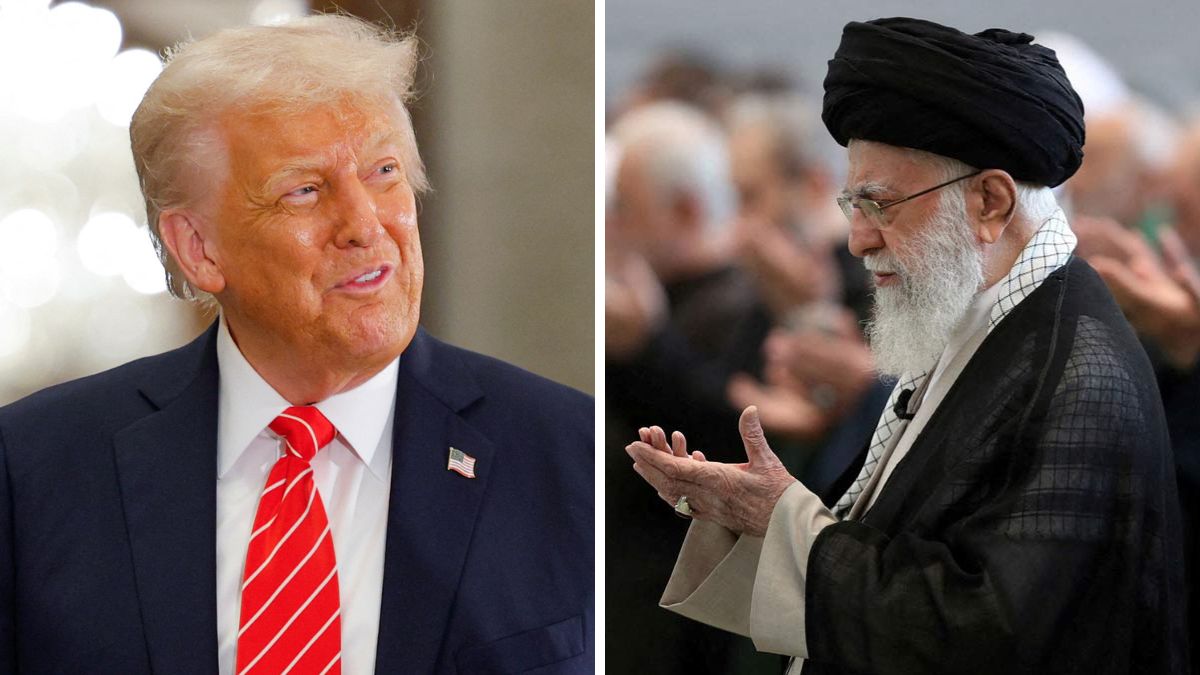Donald Trump’s Persian Gulf renaming appears to be on hold for now as the plan sparks outrage in Iran
 US President Donald Trump. (Right) Iranian Supreme Leader Ali Khamenei | X
US President Donald Trump. (Right) Iranian Supreme Leader Ali Khamenei | X
Donald Trump appears to have backtracked on reported plans to rename the Persian Gulf as the “Arabian Gulf” following a storm of criticism from across the Iranian political spectrum. The proposed shift—which he was expected to announce during his recent visit to Saudi Arabia, Qatar and UAE—has already caused considerable anger in Iran, prompting warnings of a nationalist backlash and the risk of further destabilising fragile regional diplomacy, including the ongoing nuclear dialogue.
The water body that lies between Iran and the Arabian Peninsula has been known internationally as the Persian Gulf for over 2,000 years. The history of this name goes back to at least 550 BCE, when Cyrus the Great, of the Achaemenid Empire was in power in the region. Classical Greek geographers, including Herodotus and Ptolemy, also used the term “Sinus Persicus” or Persian Gulf. A host of medieval Arab scholars—among them Estakhri, al-Masudi and Ibn Khaldun—too, referred to the region as “Khalij Fars” in recognition of its dominant Persian influence at the time.
Today, the United Nations and the International Hydrographic Organization officially recognise “Persian Gulf” as the correct usage. A 2006 UN study, drawing on more than 6,000 historical maps and 200 academic sources, concluded that alternatives such as “Arabian Gulf” or “Basra Gulf” lack historical legitimacy. However, “Arabian Gulf” remains common in Gulf Cooperation Council (GCC) countries like Saudi Arabia, the UAE and Bahrain, reflecting more recent political narratives rather than long-established fact.
The naming dispute isn’t new, but its temperature has risen over the decades. In the 1950s, Egyptian president Gamal Abdel Nasser helped popularise the term “Arabian Gulf” as part of a broader campaign for pan-Arab identity, challenging Iran’s cultural and political heft in the region. Tensions worsened after the 1979 Iranian Revolution, with Tehran pushing back firmly against any efforts to erase the term “Persian” from the map. Iran has even taken drastic measures in protest—banning publications like The Economist and National Geographic, deporting airline staff and threatening to close its airspace to carriers who use other names.
Trump’s endorsement of the term favoured by Arab allies seems to be a calculated political move. Analysts suggest it is part of an effort to strengthen ties with Gulf monarchies, particularly at a time when Washington is seeking cooperation on issues such as normalising relations with Israel and countering Iran’s regional influence. But critics say the decision risks alienating ordinary Iranians and moderates—both inside the country and among the diaspora—who view the term “Persian Gulf” as a matter of cultural pride and national identity.
That sentiment is so strong that even figures usually opposed to the Iranian regime have spoken out. Reza Pahlavi, son of the deposed Shah and a known Trump supporter, described the renaming effort as “an insult to the Iranian people and our great civilisation.” Iran’s foreign ministry called the plan “absurd” and warned it would unify Iranians across the political divide against what it sees as a provocative and disrespectful act by the United States.
The depth of Iranian feeling on this issue can’t be overstated. In 2010, Iran pulled out of the Islamic Solidarity Games hosted by Saudi Arabia over disputes about how the Gulf was labelled in promotional materials. That same year, a Greek flight attendant was deported for referring to the “Arabian Gulf.” Google has also found itself caught in the crossfire: when the tech giant left the waterway nameless on its online maps, Iran threatened legal action. In response, the country created “Persian Gulf National Day”, held each year on April 29 to mark the expulsion of Portuguese forces from the Strait of Hormuz in 1622.
Despite Trump’s overtures to Arab states, official US policy on the matter hasn’t changed. The US Board on Geographic Names continues to recognise “Persian Gulf” as the standard term. However, the US Navy and Central Command often adopt “Arabian Gulf” in their regional communications—a reflection of diplomatic pragmatism that can lead to inconsistency and confusion.
Trump has a history of using renaming as a political signal. Earlier this year, he sparked controversy by ordering the Gulf of Mexico to be renamed the “Gulf of America”—a move that triggered protests from Mexico and even a lawsuit against Google for reflecting the change on its maps. For the Persian Gulf, too, Trump might opt to choose his preferred terminology, bit as seen in the case of the Gulf of Mexico, he won't be able to compel the world to follow suit. For the Iranians, on the other hand, the term “Persian Gulf” represents centuries of cultural heritage, geopolitical identity and historical continuity. Any attempt to question that can lead to widespread animosity in the already volatile Middle East.
Middle East